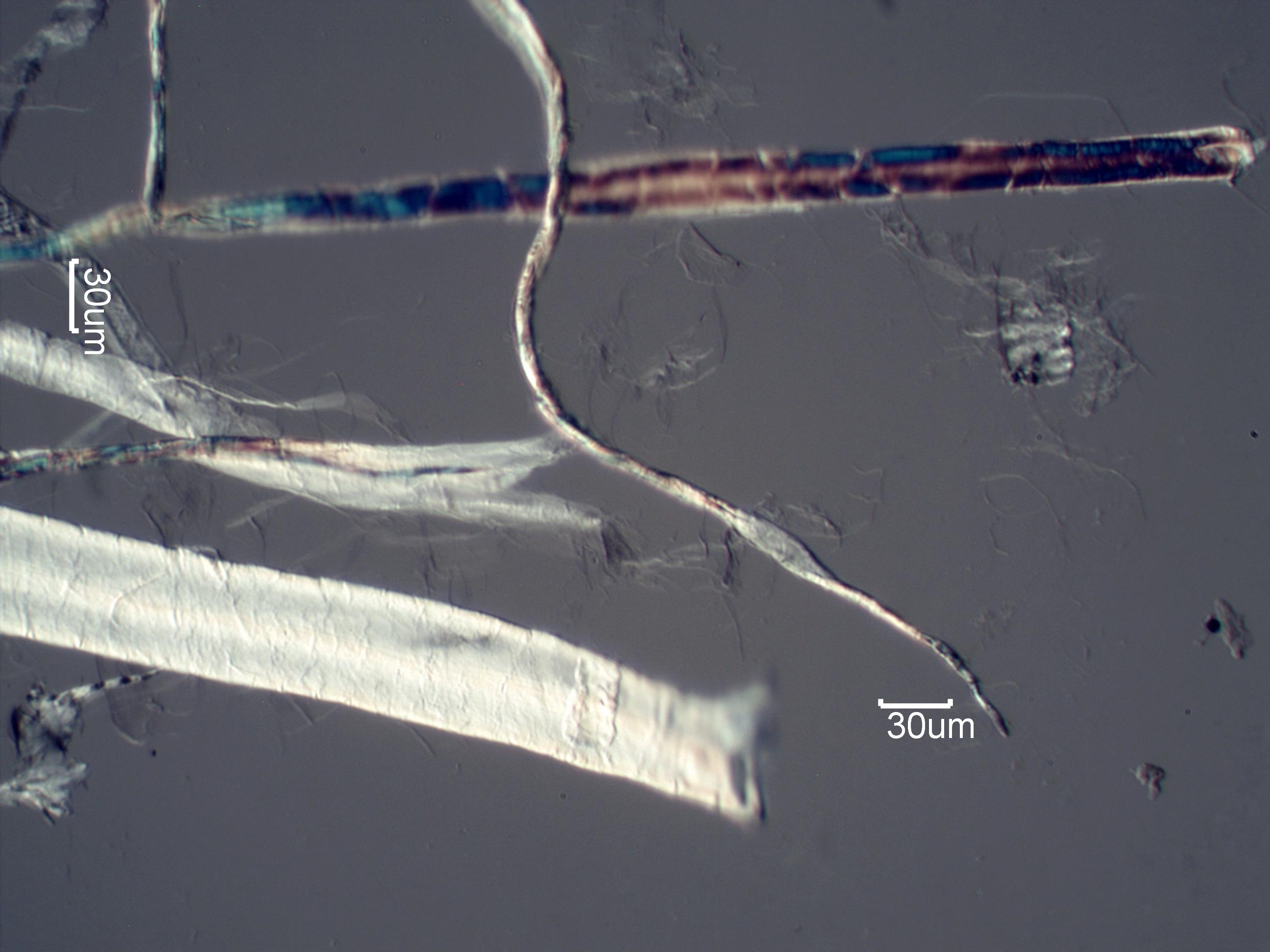Low DP Paper Fiber Fragments
These are fibers from a transformer paper insulation sample with a degree of polymerization (DP) of 300. There are still a number of natural tapered terminations or terminations with cellulose fibrils, which indicates mechanical tearing of the fiber. But along with these termination there are more with squared or stepped terminations. This field of view was selected to show the natural and mechanical terminations.
Definition/Function:
The degree of polymerization (DP) for a paper sample is a measure of the average molecular chain length of the cellulose polymer making up the paper. It is related to the tensile strength of the paper but not in a linear fashion. Tensile strength remains reasonably constant until the DP approaches 250, where it suddenly begins to drop rapidly.Significance in the Environment:
Characteristic Features:
Paper fibers with DPs above 1000 typically have the normal terminations characteristic of the species of tree from which the fiber was generated. Most of the individual fibers in a high DP paper will have high DPs but as the paper is degraded the range of DPs for the individual fibers may become quite large. In a transformer the paper fibers in contact with hot copper may degrade much more rapidly than the paper fibers deeper in the paper. Because of the length of the individual paper fibers and their distribution through the thickness of the paper a single paper fiber may have a DP of less than 250 where it is in contact with the copper and over 800 where it is deeper in the paper. The result is a slow and steady increase in the paper fibers generated from the insulation as the insulation ages. When the average DP is above 250 the fibers tend to be longer and more will have a natural or mechanical termination on one end. The lower the DP of the paper the more common a squared or stepped termination.
When the DP drops below 250 for a paper fiber it no longer has the tensile strength to support a tensile strain. As a result it breaks normal to the length of the fiber. The break may be square or stepped but there are no spurious cellulose fibrils. The lower DP also corresponds to a lower refractive index and birefringence in the fiber but the DP may not be uniform along the fiber when the fiber was degraded in the paper matrix. Differences in the micro-environments in the paper can result in different DP's along the fiber.


